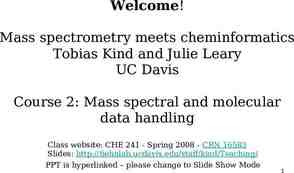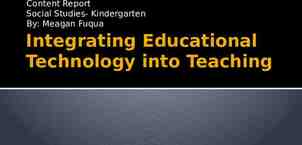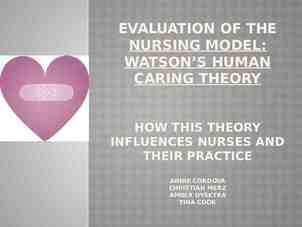Action Planning & Monitoring Assessment, Accountability, Research,
49 Slides944.10 KB
Action Planning & Monitoring Assessment, Accountability, Research, and School Improvement Division
Wireless Code 0448-wifin 7%yanex8 0048-wifig 9suse 88 Henderson
School Improvement 855-7783 AARSI TEAM: Lisa Biesinger Brett Campbell Kim Mauk Sue Daellenbach Becca Meyer Krista Donnelly Stacie Nelson Sue Egloff Deb Roberson Ramona Esparza Wayne Roberson Jeff Halsell Nathan Trenholm Laura Love Lakeisha Young Greg Manzi Tim Zeidler
Action Planning Purpose If schools are to change, it must first be understood that it is not enough to change the behavior of individuals – what must be changed as well are the systems that encourage, support, and maintain present behavior patterns and discourage new patterns from emerging. Phillip Schlecty (1997) Implem ent Evaluat e School Improvement Process Plan
District Goals and Objectives – pg. 3 Turn in your handout to pg. 3 to examine school district goals and measurable objectives.
Agenda – pg. 4 Root Cause Quality Criteria Identify Solutions Set Goals & Measurable Objectives Planning Action Steps Monitoring Implementation Evaluating Action Plan Calendaring for 2012-13 and Next Steps
Norms for Today Be present, participate, and engage fully. Listen to learn, limit sidebars. Monitor personal technology. Pay attention to hand signals. Provide feedback in the “Parking Lot”. Response Cards at your table.
Materials
School Improvement Gather and Organize Planning Processes – pg. 5 Organize Data Data Review Performance Performance Framework Describe Performance Performance Trends Inquiry Process – Day 1 and 2 Progress Monitorin gOngoing Prioritize Prioritize Performance Concerns Concerns Identify Root Root Identify Causes Set Set Performance Targets Targets Identify Solutions and Action Steps Identify Measurable Objectives Identify Implementation Evidence Target Setting – Day 3 Action Planning – Day 3
Root Cause Homework Pg. 6 Completed the Inquiry Process Finalized Data Trends-Positive/Negative Determined Key Strengths & Priority Concerns Identified Root Cause(s)
Root Cause Review – pg. 6 Root Causes ARE Deepest and most basic concern & barriers to increasing student performance Within the school’s control and evidence based Focused on adult actions Root Causes are NOT Concerns about budget, staffing, or new curriculum External levels of root cause analysis out of site control Focused on student actions
Quality Criteria for Root Causes pg. 6 Use the Quality Criteria for Root Causes with your school partner and discuss these questions: How are the identified root causes aligned with the criteria? Are the root causes aligned with the performance challenges and trends? Do you have data to prove and support your root cause?
Sample Inquiry Process Negative Trend - pg. 7 Performance Trend Performance Concern Root Cause Academic Growth The median growth percentiles in reading for 6th grade students showed an overall decrease from 50 in 2009 to 38 in 2010, then increased to 44 in 2011. This performance trend is impacting the overall schoolwide growth percentiles; preventing the school from meeting the District expectation of 53 or higher for the next level on the SPF. Lower growth percentile rates in 6th grade and a review of intervention processes and collaboration practices for 6th grade show that interventions structures are not organized sufficiently to provide teachers the time and resources to monitor student progress and plan appropriate interventions for each student’s individual needs. Solution
Sample Inquiry Process Positive Trend – pg. 7 Performance Trend Academic Growth Gaps The median growth percentiles in math for FRL students decreased from 70 in 2009 to 68 in 2010, then remained stable at 68 in 2011. Key Strength For the last three years, the median growth percentiles in math for FRL students have remained at or above district expectations on the School Performance Framework. Root Cause A curriculum review and classroom observations show 90% of observable student work in mathematics reflects grade-level standards and students were able to connect the work to an understanding of the learning objectives through effective feedback.
Agenda Root Cause Quality Criteria Identify Solutions Set Goals & Measurable Objectives Planning Action Steps Monitoring Implementation Evaluating Action Plan Calendaring for 2012-13 and Next Steps
Guiding Questions for Solutions pg. 8 Are the solutions grounded in research? Will implementing the solutions address the identified concern and root cause? Will the solutions, if properly implemented, impact student achievement? Does the school have the control and resources to implement and sustain the solutions? Is everyone who is part of the challenge also part of the solution?
Solution Examples Are: Revising a school process (i.e. intervention time, inclusive school practices, scheduling) Ongoing Effective Collaboration (i.e. sharing data, instructional strategies and modifying lessons accordingly) Are NOT: Programs Textbook fidelity Ineffective collaboration (i.e. schedules, field trips, assemblies, data talk without action)
Time to Write Solutions – pg. 8 Use the handout and follow the discussion format chart, write at least one solution. Use your Response Cards as you work. Share Solutions with your partner school.
Quality Criteria for Solutions pg. 8 Use the Quality Criteria for Solutions with your team and discuss these questions: How are the identified solutions aligned with the criteria? Are the solutions aligned with the root causes?
Sample Inquiry Process Solution – pg. 8 Performance Trend Performance Concern Root Cause Solution Academic Growth The median growth percentiles in reading for 6th grade students showed an overall decrease from 50 in 2009 to 38 in 2010, then increased to 44 in 2011. This performance trend is impacting the overall schoolwide growth percentiles; preventing the school from meeting the District expectation of 53 or higher for the next level on the SPF. Lower growth percentile rates in 6th grade and a review of intervention processes and collaboration practices for 6th grade show that interventions structures are not organized sufficiently to provide teachers the time and resources to monitor student progress and plan appropriate interventions for each student’s individual needs. Highly-qualified 6th grade reading teachers will routinely collaborate for instruction by analyzing student data to review the impact of instruction and create a smaller learning community for non-proficient students.
Agenda Root Cause Quality Criteria Identify Solutions Set Goals & Measurable Objectives Planning Action Steps Monitoring Implementation Evaluating Action Plan Calendaring for 2012-13 and Next Steps
District Expectations – pg. 9 Align Solutions to Performance Concerns 2 Goals: one targeting non-proficient students and one targeting proficient students 3 Measurable Objectives for each goal Up to 4 Action Steps for each Goal
Focus Goal More information coming.
Guiding Questions for Goals – pg. 9 Will achieving the goals impact student performance? Will the goals be adequate and sustainable? Are the goals specifically linked to the performance trends/concerns, root causes, and solutions? Is there a clear rationale for each goal that can be articulated by all members of the staff?
Goals – pg. 9 You have time now to write your two goals for the year. Goal 1 – Non-Proficient Goal 2 – Proficient Keep them broad and remember a subgroup, subject, or grade will be included in the Measurable Objective.
Guiding Questions for Measurable Objectives – pg. 10 Are the measurable objectives written in terms that can be measured? Are student groups and performance standards clearly identified? Can staff members clearly articulate how the school’s Measurable Objectives support the District’s Measurable Objectives?
M.O. Framework Elementary School K-2 (70% proficient on district assessments in 5 years) Grades 4-5 Catch Up/Keep Up/Move Up (Growth %) Grades 3-5 (CRT/Trend) Middle School Grades 6-8 Catch Up/Keep Up/Move Up (Growth %) Grades 6-8 Proficiency (CRT/Trend) 1. Use the Developing a Measurable Objective Chart in your handout on pg. 11 2. Use chart paper and post your examples.
Agenda Root Cause Quality Criteria Identify Solutions Set Goals & Measurable Objectives Planning Action Steps Monitoring Implementation Evaluating Action Plan Calendaring for 2012-13 and Next Steps
Today’s Plan for Tomorrow Review current Action Steps from this year’s SIP (2011-2012) Reflect and discuss: Did you do what you said you were going to do? Has what you implemented made a difference, according to what?
Action Planning Pitfalls – pg. 12 Kitchen sink – don’t do everything at once DRIP - multiple data sources Not embedding a calendar for PD Not providing realistic staffing/resources Not monitoring implementation of action steps SIP on a shelf for no one else
Guiding Questions for Action Steps – pg. 12 Does each action step implement an identified solution? Are the action steps closely aligned to the root causes? Does each action step include a research-based strategy that will impact student achievement? Is the professional development and/or technical assistance required to implement and sustain the teaching strategy(ies) in each action step identified in “Resources”?
Action Steps Comparison Student Centered Action Step Non-Example Targeted students will participate in handson math problem solving activities that align with standards. Adult Focused Action Step Teachers will implement the Common Core State Standard mathematical practices of modeling and using appropriate tools strategically by having students create concrete models of mathematical situations and analyze the results to draw conclusions.
Write your Action Step – pg. 12 Using the handout and following the guiding questions, write your action step. Use your Response Cards as you work. Share Action Steps with your partner school.
Guiding Questions for Action Plan Resources and Amount What resources are needed (adult centered)? What is the timeline for implementing the resource? Who will be responsible Pg. 12 for implementing the resource?
Action Plan Example – pg. 13
Time to Write Using the handout and examples, complete: At lease one Action Step Resources and Amount Timeline Position
Agenda Root Cause Quality Criteria Identify Solutions Set Goals & Measurable Objectives Planning Action Steps Monitoring Implementation Evaluating Action Plan Calendaring for 2012-13 and Next Steps
Guiding Questions for Monitoring – pg. 14 Determine the evidence used to ensure the implementation of the action steps. Create a detailed and specific timeline for collecting and analyzing the evidence. Establish the position(s) responsible for ensuring completion of each action step.
Monitoring Plan Example – pg. 13
Time to Write Using the handout and examples, complete: Evidence of Implementation Timeline Position
Agenda Root Cause Quality Criteria Identify Solutions Set Goals & Measurable Objectives Planning Action Steps Monitoring Implementation Evaluating Action Plan Calendaring for 2012-13 and Next Steps
Guiding Questions for Evaluation – pg. 14 How will you know your resources or strategies, aligned to the action steps, have been implemented? Consider your local data sources to monitor progress: What data do you have available that will allow you to track progress toward your action step(s)? When will it be available? How will the data be used?
Evaluation Example – pg. 13
Time to Write – pg. 14 Using the handout, examples, and Evaluation Plan Guidance Chart to complete: Performance Benchmarks
Quality Criteria for Action Planning pg. 15 Use the Quality Criteria for Action Planning with your team and discuss these questions: How are the identified action steps, monitoring, and evaluation aligned with the criteria? Are the action steps aligned with the solutions?
Agenda Root Cause Quality Criteria Identify Solutions Set Goals & Measurable Objectives Planning Action Steps Monitoring Implementation Evaluating Action Plan Calendaring for 2012-13 and Next Steps
Guiding Questions for Calendaring for 2012-13 – pg. 16 What professional development, technical assistance, or ongoing assistance will be needed for the next school year? Will professional development be job embedded (e.g. action research, case studies, lesson studies, book studies, etc.)? How will you ensure professional development is aligned to the solutions and scheduled throughout the year?
Who Will Review School Plans? Academic Managers will review and approve ALL state required restructuring/turnaround plans and school improvement plans. Title I Peer Reviews will review N1-N2 school improvement plans. AARSI will review all finalized plans and submit to the Nevada Department of Education for state approval.
Next Steps – pg. 16 April 2012 Title I Budget Summary & Action Steps tied to the Budget pages due to Title I April 13 Attend SIP Workshops – register on Pathlore April April April April 17 18 19 20 Area 1 – Duncan ES Area 2 Office Area 3 Office Open Session for All at Nedra Joyce Completed Goals and Measurable Objectives Due to Academic Manager by April 24 May 2012 SIP plans due to Academic Managers by May 31






















































